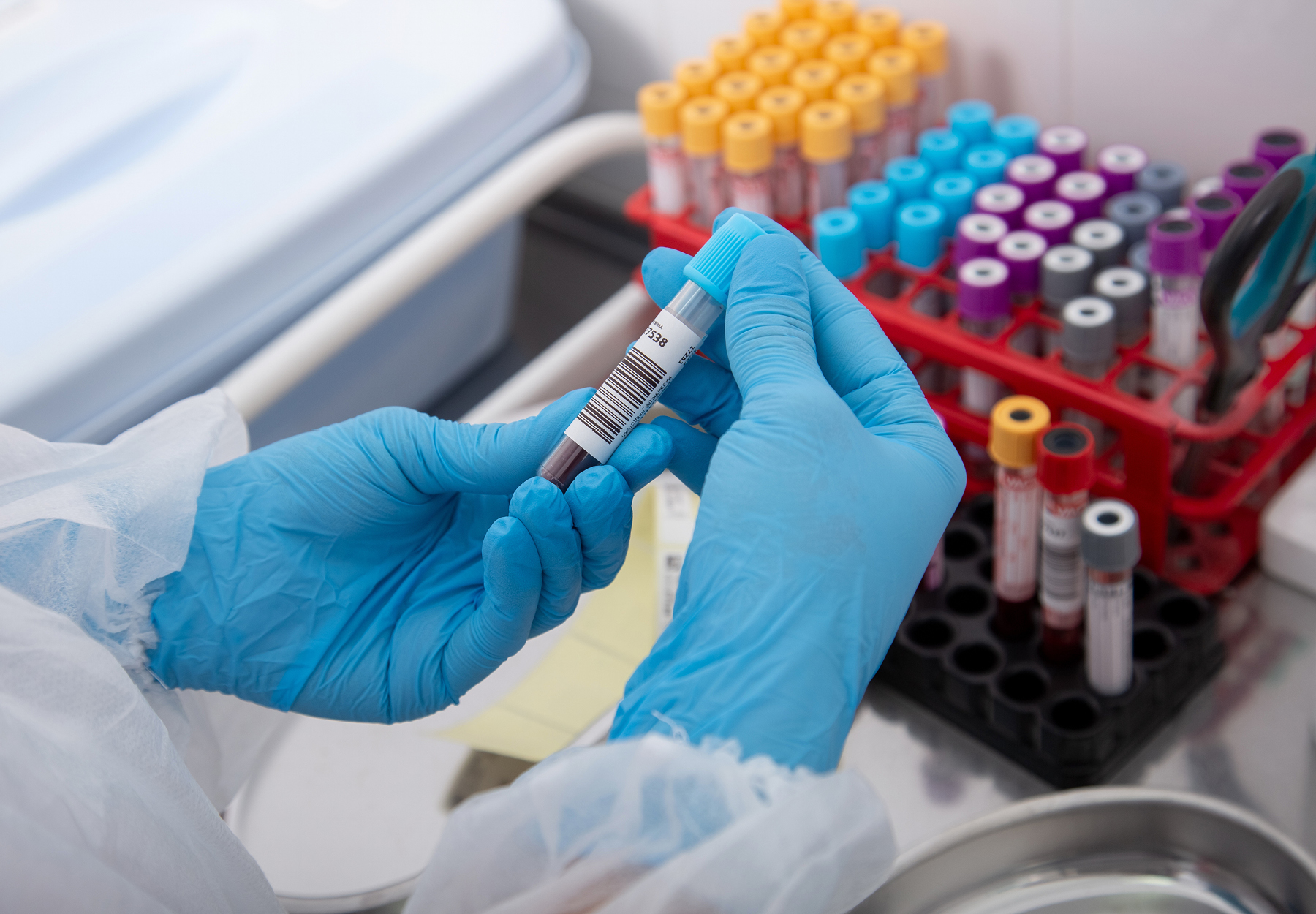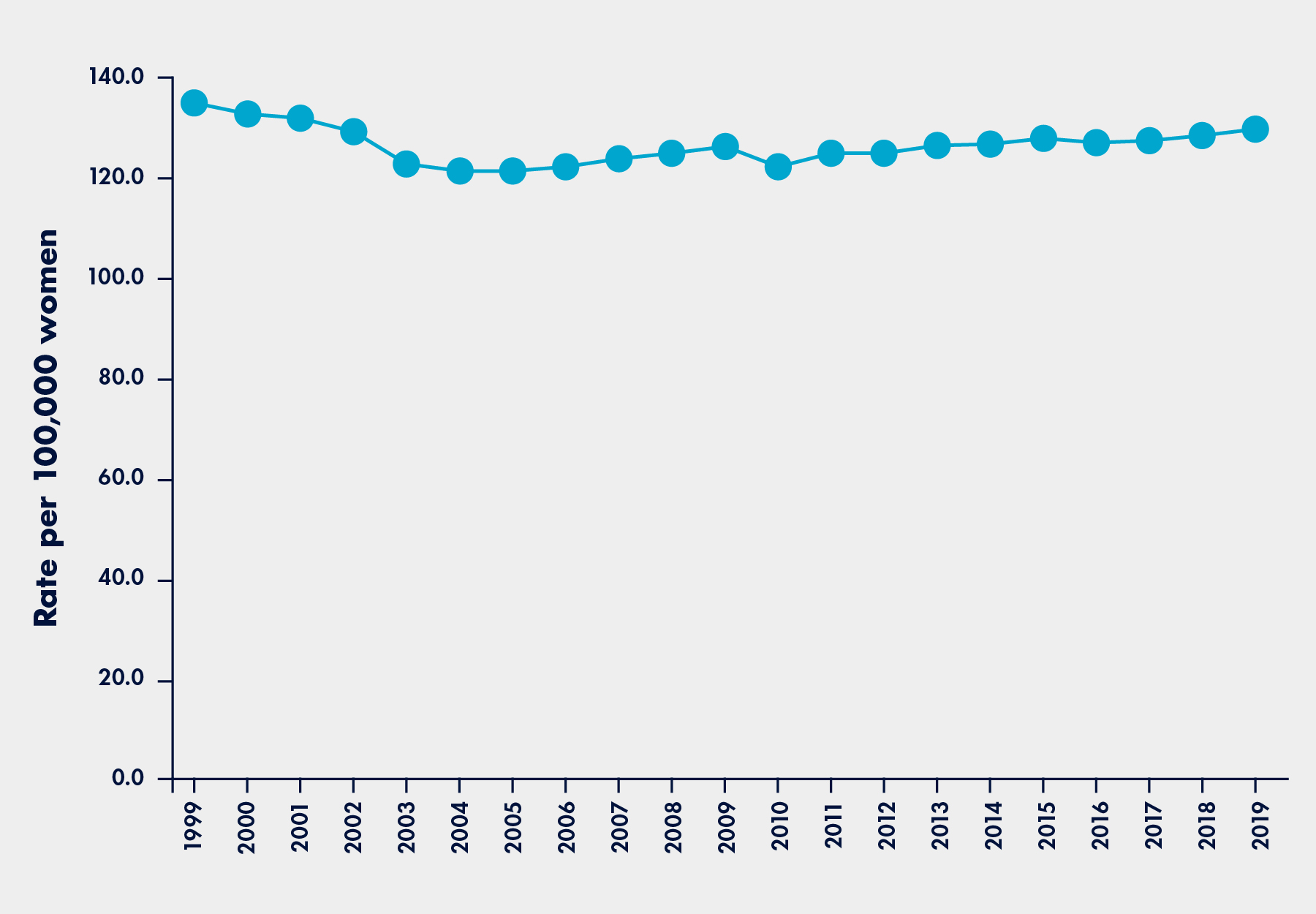Improving the Chances of Early Breast Cancer Detection in High-Risk Patients
A new test targeting changes in serum proteins can detect breast cancer up to two years before the condition would normally be diagnosed.

Blood-based testing may offer a cheaper and less invasive alternative to current screening methods for early detection of breast cancer in women at genetically high risk of developing breast cancer. A recent study suggests that a new test developed by Dutch researchers targeting changes in serum proteins can detect the onset of breast cancer up to two years before the condition would normally be diagnosed.
The Diagnostic Challenge
Breast cancer is the second most common cancer in US women, trailing only cancers of the skin, accounting for 30 percent of all newly diagnosed female cancers each year. In the US, the average risk of a woman’s developing breast cancer is roughly 13 percent, or one in eight.
Annual Rates of New Breast Cancer Cases, 1999 to 2019

According to the American Cancer Society’s (ACS) estimates, by the time 2022 ends:
- About 287,850 women in the US will have been diagnosed with new cases of breast cancer;
- Roughly 51,400 new cases of ductal carcinoma in situ (DCIS) will have been diagnosed; and
- Breast cancer will have claimed the lives of approximately 43,250 women.2
The positive news is that detecting breast cancer early when more treatment options are available significantly improves the chances of survival. Thus, the ACS estimates that women whose breast cancer is detected at an early stage have at least a 93 percent higher survival rate in the first five years.
There are also well-established risk factors for the disease, including age, family history, and genetic makeup. Genes linked to breast cancer include BRCA1 and BRCA2, as well as PALB2, ATM, and CHEK2. Accordingly, regular screening is recommended for women who have these risk factors. However, current imaging modalities used for breast cancer screening tend to be expensive, invasive, and inconvenient. Moreover, cancer is apt to develop in the intervals between screenings, especially where patients miss or put off scheduled screening sessions.
Regular blood testing to monitor levels of biomarkers associated with the onset of breast cancer at an early stage could offer a less burdensome alternative or supplement to imaging-based screening.
Blood-based tests typically target certain biomolecules that are shed into peripheral fluids from the site of a tumor. Potential biomarkers include circulating tumor cells (CTCs), circulating tumor DNA (ctDNA), microRNAs (miRNAs), and exosomes. However, these biomarkers have been used primarily after breast cancer has already been diagnosed to inform a patient’s chances of survival and guide treatment decisions, rather than in actual diagnosis.
The TESTBREAST Study
With this in mind, a group of researchers from Leiden University Medical Center in the Netherlands set out to develop a diagnostic test for early breast cancer detection in women at elevated risk due to family or genetic risk factors based on a panel of protein-based biomarkers. “The longitudinal collection of serum samples will potentially provide a unique protein biomarker signature, which can be used for the development of a blood test with high sensitivity and specificity for early cancer onset,” wrote the authors of the study that appeared in the October 23, 2022 issue of the International Journal of Molecular Sciences.3
Seeking potential biomarkers, the researchers identified 764 proteins as candidates. They then analyzed serum samples collected from women carrying BRCA gene mutations enrolled in the Trial Early Serum Test BREAST cancer (TESTBREAST) study carried out at nine breast cancer screening centers across the Netherlands. Using targeted mass spectrometry to examine pre-diagnostic changes in protein levels, they performed a nested case–control analysis on serum samples from three women who developed breast cancer and three women who did not.
Based on longitudinal analysis of serum samples, they determined that each patient had unique and identifiable patterns of protein clustering. “This illustrates that the protein profile can be considered as ‘individual,’ which has implications for the selection of interesting proteins for the development of the TESTBREAST blood test,” the researchers wrote.
After performing cluster analysis of the cases and controls, they determined that, out of 764 candidate proteins, six were significantly associated with early breast cancer onset. In other words, they found that there were significant differences in levels of these six proteins between women who did develop breast cancer and women who did not. Even more significantly, using both personalized and population-based cutoffs, they found that these differences in protein levels were detectable up to two years before clinical diagnosis of breast cancer.
Implications and Next Steps
The six proteins “could form the basis for a blood test for early detection of breast cancer in women at a higher risk,” noted researcher Sophie Hagenaars while presenting the study results during the 13th European Breast Cancer Conference on Nov. 16. “Testing should probably be based both on proteins that differ between women with and without breast cancer and on proteins that alter in an individual person over time,” she continued.4
More work remains. The study has some limitations, including the possibility that the clustering pattern of proteins in patients may be influenced by the time of measurement. However, the authors added, one of the samples that was analyzed at a later point in time still clustered in the same way.
During a press conference, lead researcher Wilma Mesker, PhD, assistant professor in the Department of Surgery at Leiden, suggested that “for the future, we would like to validate these findings in the complete TESTBREAST cohort.” The team is also working with other international researchers to simplify the complex testing technique.5
But if the findings are validated by further research and the technique is simplified, the new blood-based protein testing could be a valuable “add-on to existing screening techniques,” Mesker added.5 “Blood tests are relatively simple and not particularly painful for most people,” Hagenaars pointed out, which would allow for further screening in the gaps between patients’ regular imaging-based screening appointments.4
References:
- https://gis.cdc.gov/Cancer/USCS/#/Trends/
- https://www.cancer.org/cancer/breast-cancer/about/how-common-is-breast-cancer.html
- https://www.ncbi.nlm.nih.gov/pmc/articles/PMC9604317/
- https://event.eortc.org/ebcc13/2022/11/16/researchers-find-changes-in-blood-proteins-up-to-two-years-before-breast-cancer-diagnosis/
- https://www.medscape.com/viewarticle/984230
Subscribe to Clinical Diagnostics Insider to view
Start a Free Trial for immediate access to this article